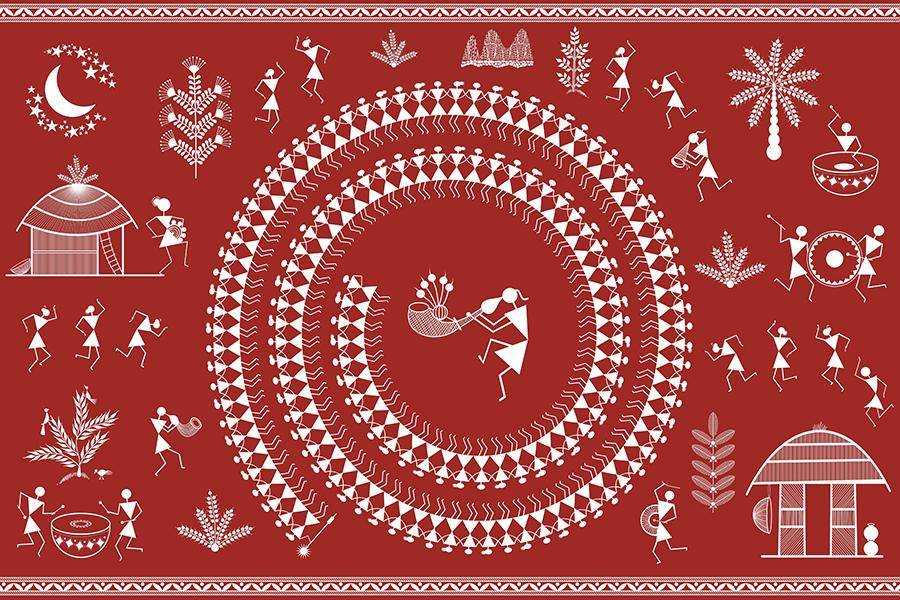Arts & Culture
Warli Art: An Ancient Tribal Art form from Western Ghats

Warli is one of the ancient forms of Indian tribal art. The tribal art form was originated in Warli region in Maharashtra and is practiced till date. The Warli culture strongly believes in Mother Nature and therefore their paintings usually depict all elements of nature. In ancient times, the artists mostly use the walls and floors of their clay huts as a canvas for their paintings. On special occasions, the floor and walls of the huts are cleaned and thinly coated with a mixture of mud and cow dung, which acts as a background for the traditional Warli art.
The style and materials used

This art of Warli primarily comprises of geometric shapes and figures like triangles, circles, lines, and squares to depict life, culture, and tradition of the Warli tribe. The ink or paint used in sketching this art is a white paste prepared by mixing ground rice with water and gum, while the paintbrush is made of bamboo stick chewed at its tip to form the brushes of the applicator. One of the most common and well-known themes in Warli form of art is a spiral chain of human beings around one central motif. The depiction of such a pattern is symbolic to their belief that life is an eternal journey, which has no starting or ending point.
Keeping the traditional form of art alive
Since the 1970s, Warli painting has moved onto canvas and paper, when Jivya Soma Mashe and his son Balu Mashe started to paint not for ritual purposes but for the sake of their artistic pursuits. Jivya is considered as the modern father of Warli painting.

While traditional art forms like Warli are finding it hard to survive in this digital era, a few selfless souls are putting all their efforts to keep the tradition alive. One of the saviors is Govardhan Eco Village in Thane district that has stepped forward to make this art form alive forever by offering the Warli artists various platforms to showcase their art.

Coca-Cola India introduced a campaign featuring Warli painting in order to highlight the ancient culture and represent a sense of togetherness. The campaign was known as “Come Home on Deepawali”, which specifically targeted the modern young generation. The advertisement was promoted on traditional mass media, combined with radio, the Internet, and out-of-home media.





























